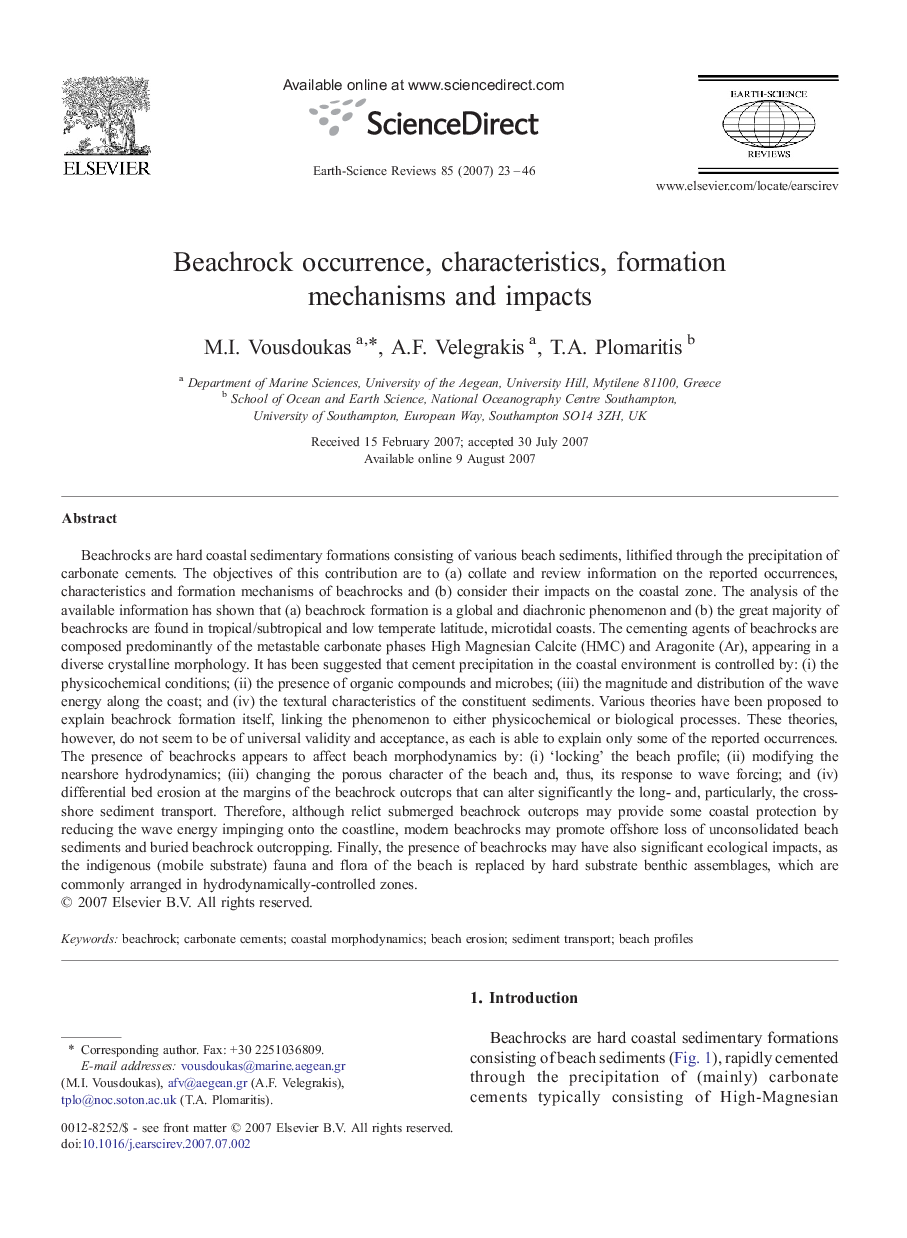| کد مقاله | کد نشریه | سال انتشار | مقاله انگلیسی | نسخه تمام متن |
|---|---|---|---|---|
| 4726431 | 1640039 | 2007 | 24 صفحه PDF | دانلود رایگان |

Beachrocks are hard coastal sedimentary formations consisting of various beach sediments, lithified through the precipitation of carbonate cements. The objectives of this contribution are to (a) collate and review information on the reported occurrences, characteristics and formation mechanisms of beachrocks and (b) consider their impacts on the coastal zone. The analysis of the available information has shown that (a) beachrock formation is a global and diachronic phenomenon and (b) the great majority of beachrocks are found in tropical/subtropical and low temperate latitude, microtidal coasts. The cementing agents of beachrocks are composed predominantly of the metastable carbonate phases High Magnesian Calcite (HMC) and Aragonite (Ar), appearing in a diverse crystalline morphology. It has been suggested that cement precipitation in the coastal environment is controlled by: (i) the physicochemical conditions; (ii) the presence of organic compounds and microbes; (iii) the magnitude and distribution of the wave energy along the coast; and (iv) the textural characteristics of the constituent sediments. Various theories have been proposed to explain beachrock formation itself, linking the phenomenon to either physicochemical or biological processes. These theories, however, do not seem to be of universal validity and acceptance, as each is able to explain only some of the reported occurrences. The presence of beachrocks appears to affect beach morphodynamics by: (i) ‘locking’ the beach profile; (ii) modifying the nearshore hydrodynamics; (iii) changing the porous character of the beach and, thus, its response to wave forcing; and (iv) differential bed erosion at the margins of the beachrock outcrops that can alter significantly the long- and, particularly, the cross-shore sediment transport. Therefore, although relict submerged beachrock outcrops may provide some coastal protection by reducing the wave energy impinging onto the coastline, modern beachrocks may promote offshore loss of unconsolidated beach sediments and buried beachrock outcropping. Finally, the presence of beachrocks may have also significant ecological impacts, as the indigenous (mobile substrate) fauna and flora of the beach is replaced by hard substrate benthic assemblages, which are commonly arranged in hydrodynamically-controlled zones.
Journal: Earth-Science Reviews - Volume 85, Issues 1–2, November 2007, Pages 23–46